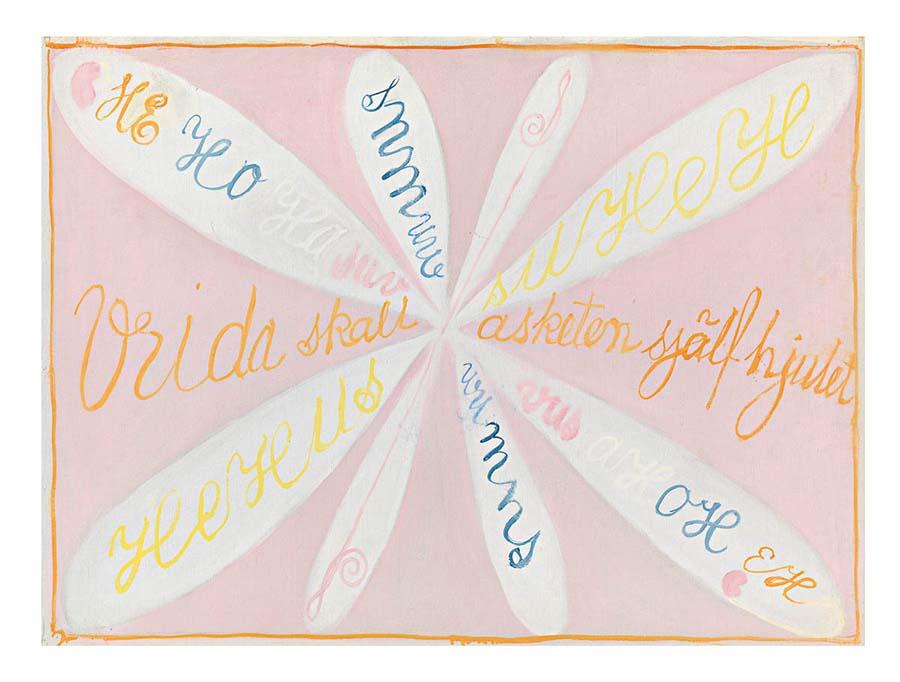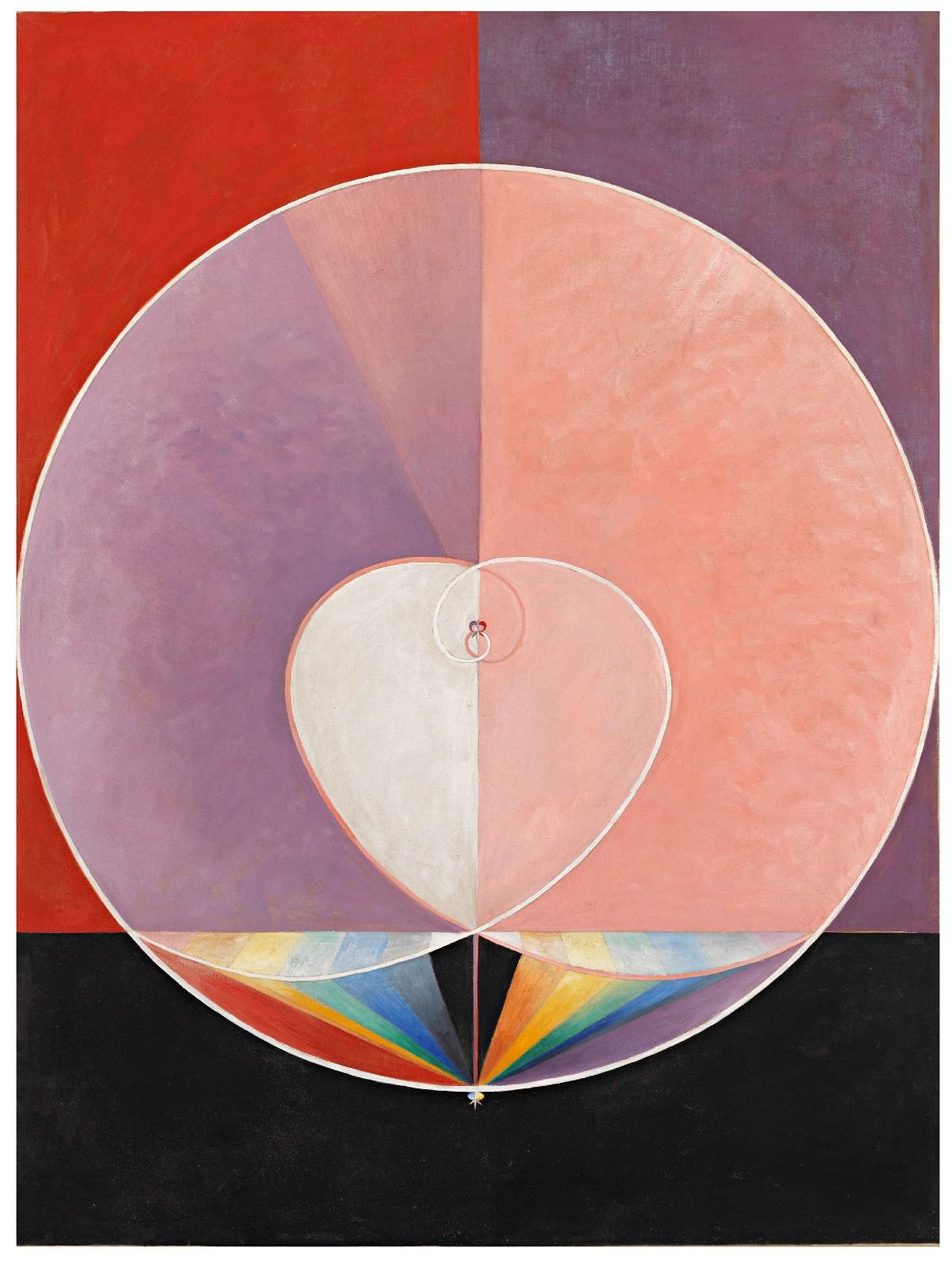A classically trained painter who graduated with honors from the Royal Academy in Stockholm in 1887, Klint supported herself primarily as a landscape artist. Imbued by her family with a love for mathematics and botany, and with a deep interest in the natural world, Klint’s work was already grounded in science. Like many of her contemporaries, Klint was influenced by the exciting new discoveries such as x-rays, as well by the philosophical movements of Theosophy, spiritualism and Anthroposophy, and expressed her evolving world view through her art.
Klint became interested in spiritualism as a teenager, after the death of her younger sister. In 1896, she formed a spiritualist group named The Five with four female friends—Anna Cassel, Sigrid Hedman, and sisters Mathilda Nilsson and Cornelia Cederberg. The Five sought to connect with a higher power, and met regularly for prayer, séances and meditation. They explored more intuitive creative expression, including abstract automatic drawings. In 1904, Klint felt commissioned by one of her spirit guides to begin her major series: Paintings for the Temple. From 1906 to 1915, Klint was intensely creative, producing 193 works, guided by what she called 'divine dictation.'
Klint created a visual language using geometric forms, organic shapes resembling leaves and blossoms, recurring motifs such as spirals, and metaphoric use of color, all meticulously explained in her journals. Her work is filled with the light and shapes of the natural world, using form, line and color to create powerful works of mysterious beauty that join scientific precision with the ineffable.
While Klint was more private about her abstract art, she did have a few exhibitions, but felt the world wasn’t ready for her work. Klint’s will bequeathed her work to her nephew, with instructions that her art and journals be kept secret for twenty years before being shown. Klint’s body of work includes over 1,200 paintings, 100 texts, and 26,000 pages of notes and sketches. The 1986 Los Angeles exhibition The Spiritual in Art, Abstract Painting 1890–1985 began to bring her work international recognition. Stockholm’s Moderna Museet hosted an exhibition of Klint’s work in 2013 that brought her greater attention and a deeper appreciation of her work continues to blossom with such exhibitions as the recently closed "Hilma af Klint & Piet Mondrian: Forms of Life" at Tate Modern. Her powerful paintings continue to resonate strongly with modern viewers and artists.
























![DEl Kathryn Barton [Australian b. 1972] the more than human love , 2025 Acrylic on French linen 78 3/4 x 137 3/4 inches 200 x 350 cm Framed dimensions: 79 7/8 x 139 inches 203 x 353 cm](/sites/default/files/styles/image_5_column/public/ab15211bartonthe-more-human-lovelg.jpg?itok=wW_Qrve3)



